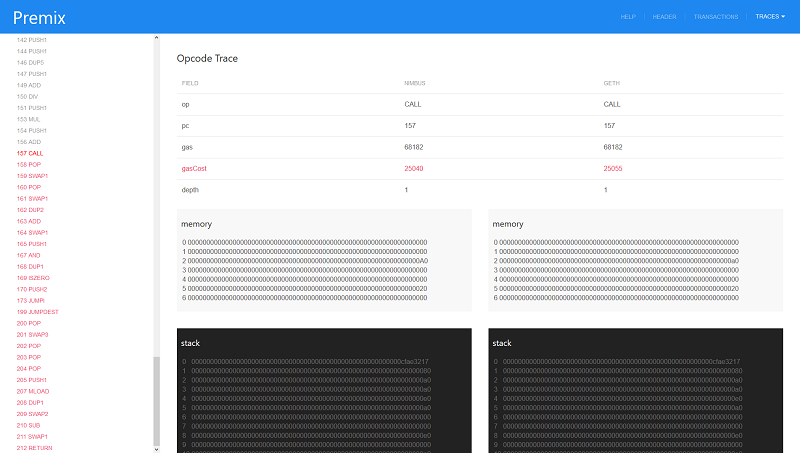Premix
Premix was premium(subsidized gasoline) mixed [with lubricant oil] used for two stroke internal combustion engines and it tends to produce a lot of smoke.
Today premix is a block validation debugging tool targeting at nimbus ethereum client. Premix will query transaction execution steps from other ethereum clients and compare it with nimbus'.
Premix then will produce a web page to present comparison result that can be inspected by developer to pinpoint where the faulty instruction located.
Premix will also produce a test case for the specific problematic transaction complete with snapshot database to execute transaction validation in isolation. This test case then can be integrated with nimbus project test suite.
Requirements
Before you start to use premix debugging tool there are several things you need to prepare.
The first one is you need to install geth from source
or binary. Minimum required geth version is 1.8.18.
Then you can run it with this command:
geth --rpc --rpcapi eth,debug --syncmode full --gcmode=archive
You need to run it until it synced past the problematic block you want to debug.
After that you can stop it by pressing CTRL-C and rerun it with additional
flags --maxpeers 0 if you want it to stop syncing or let it run as is if you want keep syncing.
The next requirement is you should build Nimbus and Premix with latest dependencies:
nim c nimbus/nimbus
nim c premix/premix
After you successfully build nimbus and premix, you can run nimbus with this command.
nimbus --prune:archive
Nimbus will try to sync up to problematic block then it will stop and execute Premix.
Premix then will launch browser to display a report page. If premix failed to open your default browser,
you can see the report page by opening premix/index.html.
In the browser, you can try to navigate tracing result and find where the problem/bug is.
Tools
- Premix
Premix is the main tool in this tool set. It produce data that can be viewed with browser and
debug data that can be consumed by debug tool. Premix consume data produced either by nimbus, persist, or dumper.
You can run Premix manually using this command: premix debugxxx.json
- Persist
Because nimbus p2p layer still contains bugs, you may become impatient when try to syncing blocks.
In /premix directory, you can find a persist.nim tool.
It will help you to sync relatively quicker because it will bypass p2p layer and download blocks from geth via rpc-api.
When it encounter problematic block during syncing, it will stop and produce debugging data like nimbus does.
nim c -r premix/persist [--dataDir:your_database_directory] [--head: blockNumber] [--maxBlocks: number] [--numCommits: number]
- Debug
Premix debugging tool also produce a set of debugging meta data that you can use to quickly
find the bug without the need to run p2p layer or any other unnecessary code.
In /premix directory you'll find debug.nim tool that you can use to execute
this debug meta data and you'll only need to work with one block and one transaction
at a time instead of multiple confusing blocks or transactions.
nim c -r premix/debug blockxxx.json
blockxxx.json contains database snapshot needed to debug a single block produced by Premix tool.
- Dumper
Dumper was designed specifically to produce debugging data that can be further processed by Premix from
information already stored in database. It will create a single block tracing information if the block already persisted.
If you want to produce problematic block debug data, better to use Persist tool. Dumper produced data
usually used to debug features of Premix and it's report page logic.
usage: dumper [--datadir:your_path] --head:blockNumber
